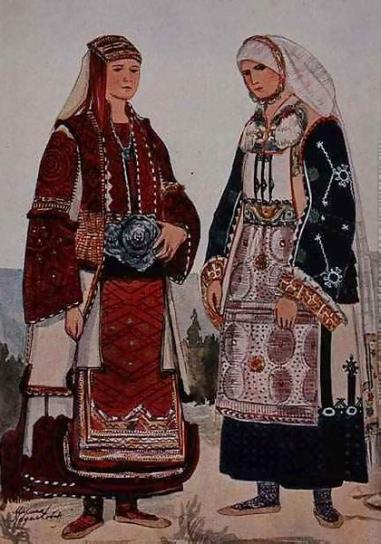Born in Osijek, died in Belgrade. He was a 19th century Serbian tailor, anthropologist and illustrator. As a self-thought painter, he traveled for two decades around Croatia, Bosnia, Montenegro, Macedonia and Serbia, painting folk costumes. In 1868 tried to establish arts & crafts school in Zrenjanin, Ruma and Iriga. In 1873, he offers his vast collection of painted folk costumes to wealthy people in Vienna, Zagreb and Belgrade. His collection was finally purchased in 1879 by the Ministry of Education in Belgrade for the National Museum, who publishes several books with his drawings: Album of folk costumes, Atlas of ornaments and Technomatic compendium, which can be found today in the Ethnographic Museum of Belgrade. His folk costume drawings became collector items for European royalty and can be found dispersed in various European museums.
A watercolor with Macedonian ethnic clothes, made during his visit in Macedonia around 1860 can be found in the collection of Victoria & Albert Museum, London UK.
Stories
Where is the grave of Gerard Chowne?
For some painters, Macedonia was their final destination. Gerard Henry Tilson Chowne (1875 India – 1917 Macedonia) was a British painter that was educated at
